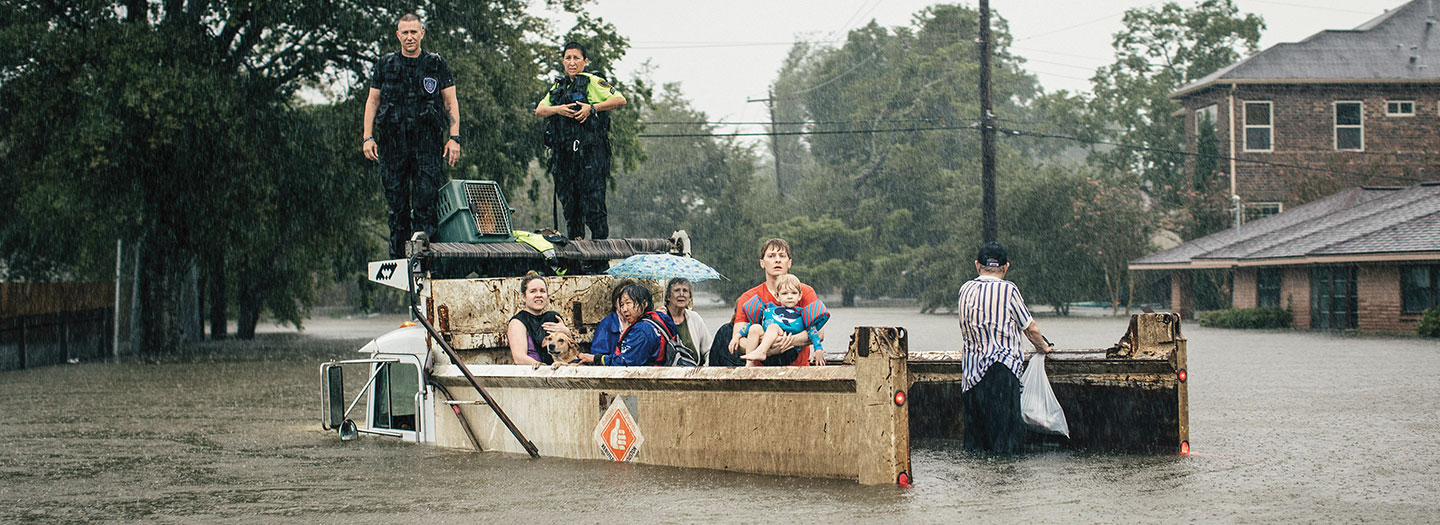Last August, Hurricane Harvey barreled into the Texas coast. In just a few days, the storm dumped more than 1.2 meters (4 feet) of rain on Houston, America’s fourth most-populous city, and surrounding areas. It set a new record for rainfall from a single storm and led to widespread flooding. Dozens of people died. Tens of thousands had to evacuate, with many still unable to return to their flood-damaged homes.
Like Hurricane Sandy, which hit the Northeast five years earlier, and Hurricane Katrina, which devastated the Gulf Coast in 2005, Harvey demonstrated how vulnerable U.S. coastal communities are to flooding. More than 120 million Americans—nearly 40 percent—live in a coastal county. And that population is growing rapidly.
Scientists believe climate change could bring even more intense flooding to the U.S. Warming temperatures and shifting global climate patterns are not only raising sea levels but could also potentially cause more extreme storms. As a result, U.S. coastal communities are looking for ways to prepare for the future (see Fighting Floods Worldwide). They’re gathering data locally and collaborating with experts around the world to identify the best strategies to keep people and essential facilities above water.
Last August, Hurricane Harvey slammed into the Texas coast. Houston, the city with the fourth largest population in America, was in its path. In just a few days, the storm dumped more than 1.2 meters (4 feet) of rain on Houston and areas around it. It set a new record for rainfall from a single storm. This caused widespread flooding. Dozens of people died. Tens of thousands had to evacuate, and many still can’t return to their flood-damaged homes.
Hurricane Sandy hit the Northeast five years earlier, and Hurricane Katrina pounded the Gulf Coast in 2005. Like these storms, Harvey showed how much danger U.S. coastal communities face from flooding. More than 120 million Americans—almost 40 percent—live in a coastal county. And that number is growing quickly.
Scientists believe climate change could bring even worse flooding to the U.S. Warming temperatures and changing global climate patterns are raising sea levels. They could also cause more extreme storms. So U.S. coastal communities are looking for ways to prepare (see Fighting Floods Worldwide). They’re gathering data at home and working with experts around the world. Their goal: Figure out the best ways to keep people and important facilities above water.

